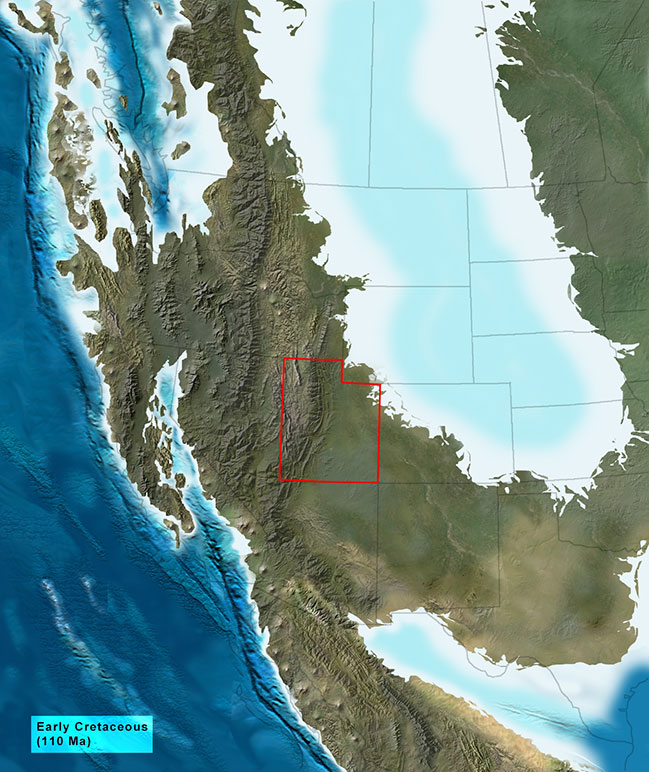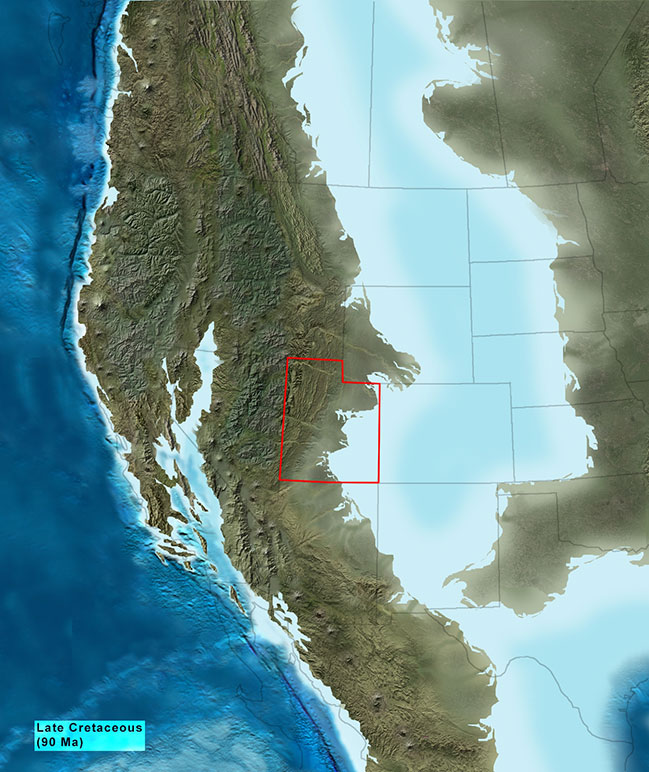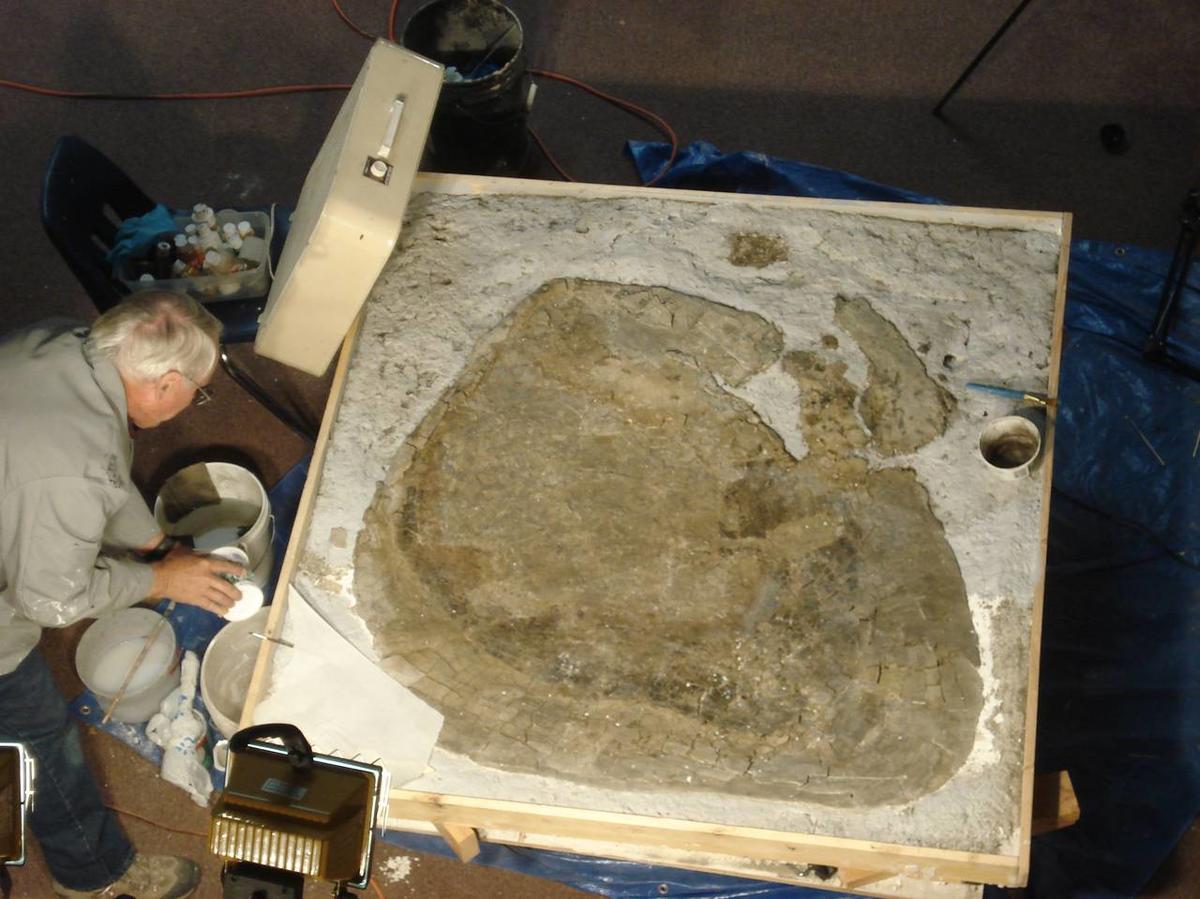Cretaceous Sea


The Cretaceous Sea, also known as the Cretaceous Interior Seaway, was a narrow, rather shallow sea that connected the modern Gulf of Mexico and modern Arctic Ocean. The formation of the sea is rather complicated. Basically, the Earth’s crust is divided into slabs of crust called plates. These plates float on semi-molten rock and get pushed around by rising hotter rock and get pulled towards areas of sinking cooler rock. Sometimes the plates collide and this can result in crumpling of the crust forming mountain ranges. As mountains are pushed upwards, they often pull the surrounding land down making the landscape look like a crumbled rug.
Simplified, the story began about 170 million years ago, during the Middle Jurassic as the North American Plate moving west at about an inch per year, started a slow crashed into the Farallon Plate that was moving east at about the same speed. Over the next 105 million years this slow-motion collision created a series of mountains between the west coast
and western Utah. To the east of these mountains, the land was pulled downwards allowing ocean water to flood the center of North America. Late CretaceousThis down-pull was erratic and the land surface would alternately bob up-and down very, very slowly over millions of years. The result was alternating times of submergence below sea level and rising above it. During the Cretaceous, the central part of North America began a downwards cycle around 130 million years ago (Early Cretaceous) and the sea reached Utah around 110 million years ago. The landscape began bouncing upwards around 70 million years ago, forming the Rocky Mountains and pushing the ocean off the continent.
Much of this up and down motion during the Cretaceous is preserved in the Book Cliffs and in the Grand Staircase National Monument as alternating layers of marine and terrestrial sedimentary rocks as the coastline shifted back and forth. It is for this reason that these areas are famous among geologists.
Price City is built on the marine shales called the Mancos Formation deposited around the time the Cretaceous Sea was at its maximum depth (maybe 500-1000 feet). The surrounding Book Cliffs record the erratic withdrawal of the Sea towards the end of the Cretaceous and the formation of coal swamps (see Coal Mines).
Cretaceous Sea Finds
- Ammonites
- *Giant Clam
*On display at the museum.


